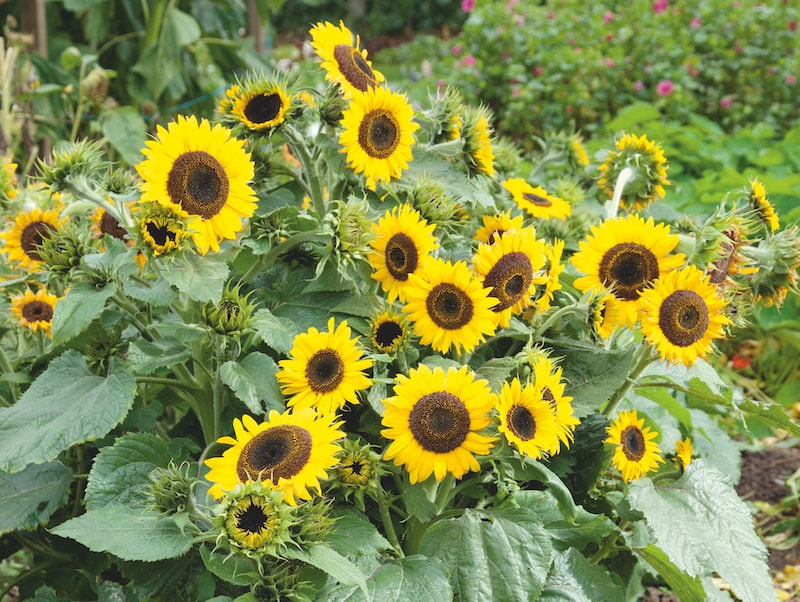You often ask us which plants and flowers are best for encouraging birds to visit your gardens. To help provide the information you’re looking for, we asked some of our favourite bloggers for their expert tips. If you’re wondering how to add wildlife-friendly plants to your garden and attract more birds, here are some great pointers.
Plant a tree
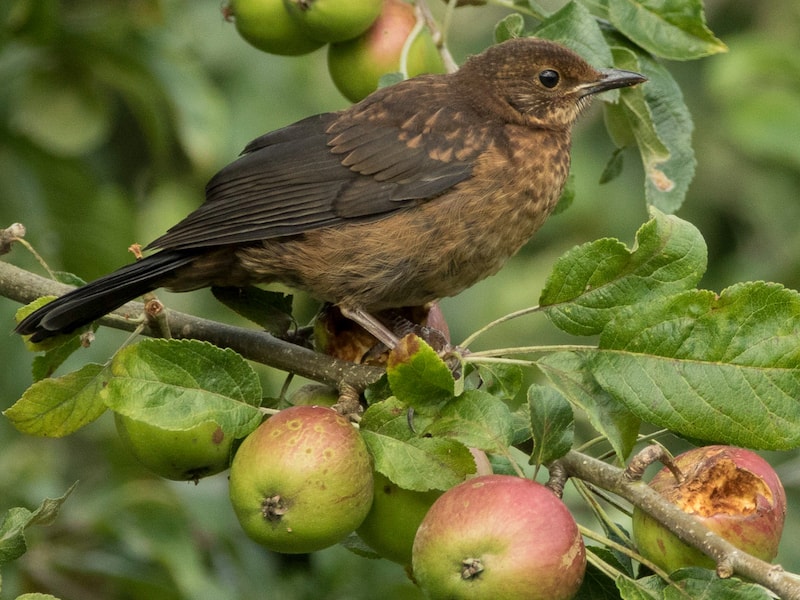
Image provided by Nick Martin at All Things Wild.
According to the results of the RSPB’s Big Garden Birdwatch, the numbers of long-tailed tits, coal tits, redwings and fieldfares all dropped in the last year. But there’s lots you can do to help, especially if you’re able to plant a tree or two. George, whose blog Green Fingered George is full of useful insights for wildlife-minded gardeners, says he’s planted lots of crab apple trees in community orchards and gardens, and found they’re great for blackbirds and starlings, plus some rarer visitors: “I once saw waxwings munching on crab apples, that was a rare treat!”
Trees give birds a vantage point safe from most predators as well as sheltered nesting sites. Some trees are also a source of food. As Alexandra Campbell of The Middlesized Garden says, “I have a pair of crab apple trees – Malus hupehensis – in my front garden and the birds adore the tiny fruits in autumn.”
A gardening couple who love planting to encourage birds, Mars and Kirsten at My Home Farm also planted a crab apple to attract more of our feathered friends. Not only do the little apples provide a welcome food source when the seasons change, but Mars reminded us that “crab apples can also be home to over 90 species of insects.” This is great for robins, blue tits, swifts and swallows.
Over at All Things Wildlife, blogger Nick Martin also recommends planting apple trees to encourage starlings, blackbirds, robins, and song thrushes. To keep those birds coming back, he suggests storing the windfalls (that aren’t destined for crumble) in a cool place and then throwing them out in mid to late winter when the apples are fewer on the ground. This will help prolong the bounty.
If you’re not keen on apples, Euan Buchan aka The Edinburgh Birdwatcher says, “a tree with berries attracts a lot of birds including thrushes and blackbirds.” But that’s not all you might see – as Euan goes on to tell us: “If you’re lucky you might get a green woodpecker (I’ve still to see one) and in the winter, berry trees attract waxwings.”
Plant native hedging
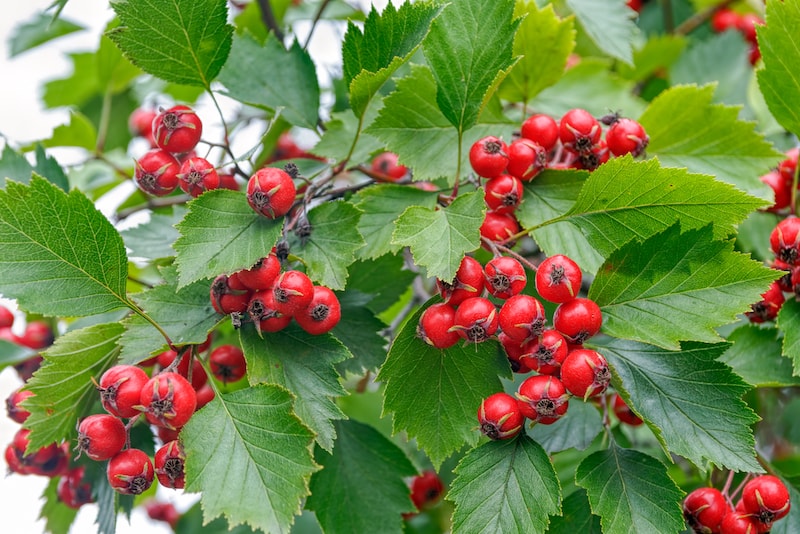
Image: Igor Grochev/Shutterstock
“I would recommend planting native hedging to support [birds] if you have room,” says Sarah Whiting at Craft Invaders. She sees many birds feeding and sheltering in hedgerows where she lives and says that our “native birds have evolved to feed both on native plants themselves and the insects they attract.” This being the case, a wild native hedge is the way to go if you want to attract more birds.
Over at All Things Wildlife, Nick is a big believer in this strategy, writing that “beech, holly or hawthorn will provide nesting opportunities as well as fruit and seeds in the autumn.” YouTuber Graham Barker says, “Winter thrushes, i.e. redwing and fieldfare, eat worms and like hawthorn and rowan berries.” He also recommends holly, saying that prickly leaves offer great shelter for nesting birds.
Holly is a big favourite with our bloggers. Not only is it native, but it’s also extremely versatile and can be grown as hedging, as a hardy shrub, or as a beautiful evergreen tree. Blogger Emma Reed says if she was to recommend one plant for attracting birds, it would be our native holly. She also has a black elder which she says “grows very fast and in the spring/summer it provides blossom and seeds. This becomes very popular with the smaller tit-type birds.”
If you do decide to plant a hedge, the best way to encourage wild birds to set up home and raise chicks there is to be extremely cautious when pruning. In fact Catherine Hughes at Growing Family says the best thing is to avoid pruning trees and hedges altogether during the spring and summer: “At this time of year birds are nesting, so pruning could remove their habitat and disturb their young. Wait until autumn to get the pruners out and you’ll be much less likely to disturb anything.”
Grow climbers
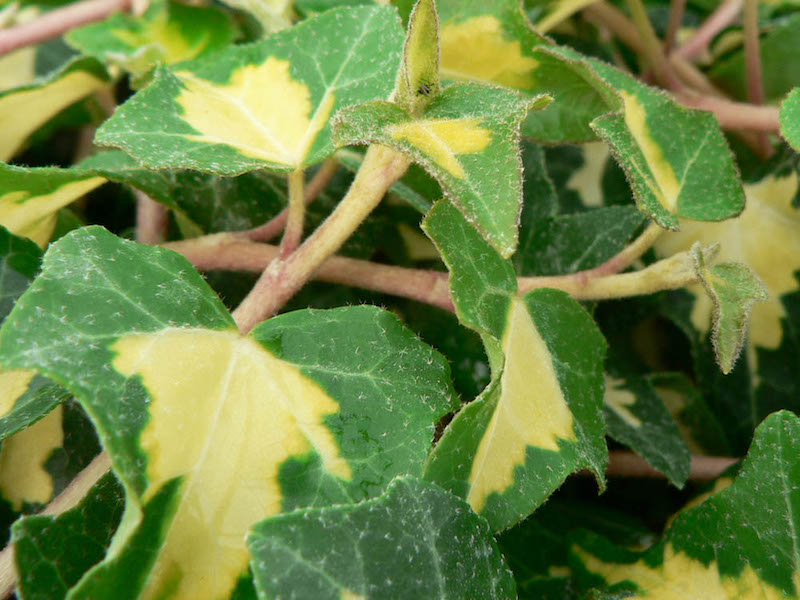
Image: Darby Nursery Stock Ltd
A plant which you certainly need to keep on top of, but which is a huge hit with the birds, is ivy. It gets a big thumbs up from the online wildlife gardening community. George at Green Fingered George explains its appeal: “In autumn, the flowers attract insects, when not much else is around, which in turn provide food for robins and wrens. In patches it can be so thick and dense that it provides shelter for nesting birds (there are currently blackbirds and wrens nesting in ours.)”
Jemma at Thimble and Twig is a fan of honeysuckle, as is Green Fingered George. He says that this popular climber provides berries and shelter for birds such as thrushes, and bullfinches. In summer, its heady scent attracts his mum (!) and lots of insects, which in turn provide food for a different range of birds. Jemma also recommends pyracantha – not a climber, but a bush of many berries which provides an excellent food source. She says, “a top tip from my nan was to grow pyracantha (any type but particularly the orange glow) as birds love their berries!”
Allow seeding
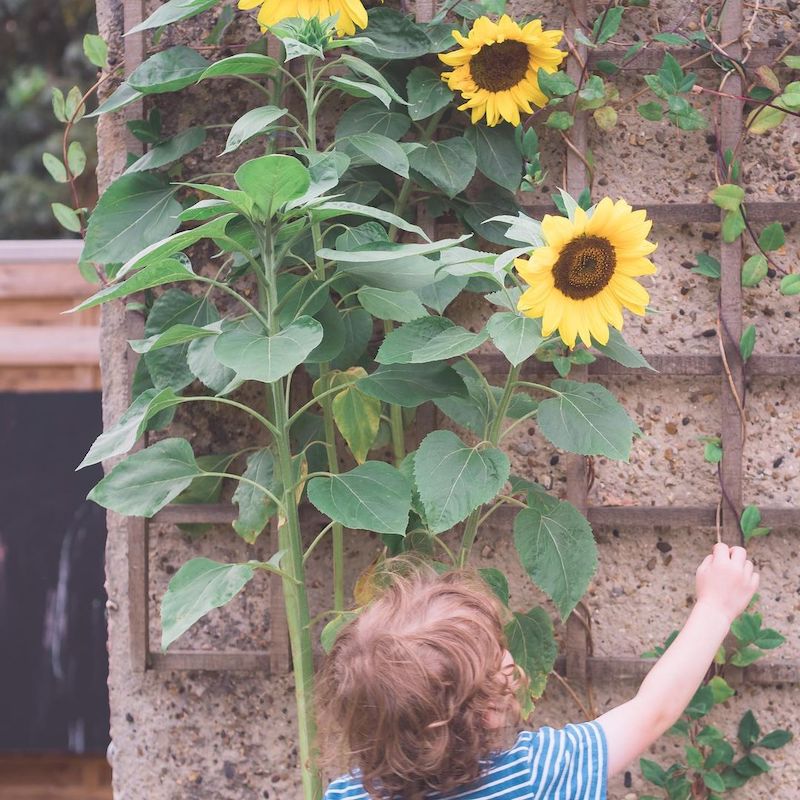
Image: @thimbleandtwig
Planting wildflowers is a great way to attract pollinators and the birds that feed on them. By letting them go to seed, you increase the utility of these amazing plants still further. Claire Bones at The Ladybird’s Adventures, particularly recommends sunflowers. She says, “in addition to being fantastic for kids to enjoy watching them grow, they also attract birds and when the flowering season is over, all the seeds in the large flower head are a great source of food for birds in the autumn.”
Izzy Fry at My Nature Photography Blog also rates sunflowers a food source for seed-feeding birds including tits and nuthatches. She adds that for her, teasel is a great addition to the garden, forming beautiful, striking seed heads in early autumn which can last until December. “Finches including Goldfinches and Greenfinches, sparrows and buntings feast on the compact seedheads.”
“If I was to recommend one bird-friendly plant or flower to add to your garden, it would be the much-maligned nettle,” says Wendy Graham at Moral Fibres. “These stinging plants support an array of wildlife. Butterflies, such as the Red Admiral and Small Tortoiseshell, and moths lay their eggs on nettles. Meanwhile, nettles provide a vital food source for caterpillars, aphids and an array of other insects. In turn, other wildlife eats the insects that eat the nettles. Ladybirds, parasitic wasps, hedgehogs, frogs, toads, shrews, and birds such as blue tits, all gravitate towards nettles to find food. In the autumn, small birds, including sparrows, bullfinches and chaffinches eat the seeds which each nettle plant produces.”
Plants you love
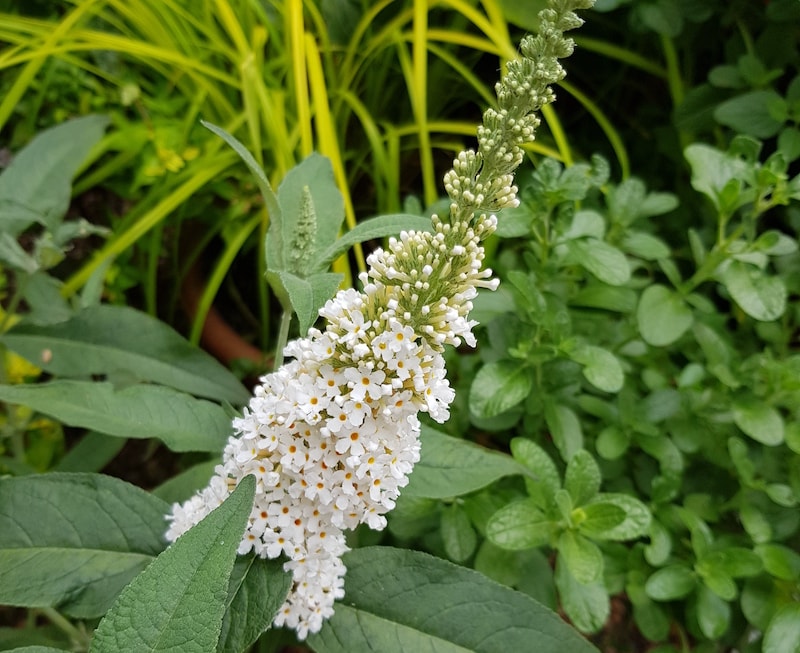
Image: NEW Buddleja Butterfly ‘Towers White’ from Suttons
Many non-natives are also magnets for birds. In fact, our bloggers had lots of ideas for other plants which they love which the birds also happen to enjoy. Zoe Williams at @beautiful_nutnut is a fan of her buddleja, saying, “Once in flower it will attract all the pollinators like butterflies, moths, bees and flies which in turn attract birds. When it starts to die back in the autumn, I’ve seen sparrows and finches pecking at the dried flowers whether it’s for food or for bugs within the flowers.”
Emma Reed tells us: “We planted a Californian lilac in our garden years ago and in the last couple of years it has really taken off. It’s an evergreen bush that develops these gorgeous purple blossoms in the spring/summer. This has just become the ideal spot for a blackbird to create her nest due to the privacy, the easy access in and out plus the shelter it provides her and her chicks.”
“Barberry, dogwood, ivy, parthenocissus (good for blackcap and mistle thrush), plus roses for rose hips in autumn,” number among Graham Barker’s favourites, while Green Fingered George loves his Berberis: “the orange flowers are literally buzzing with bees in spring, then the blackbirds eat the purple berries in autumn.”
We hope you’ve enjoyed this collection of planting advice from the bird-friendly gardening community. While you’re waiting for new bird-friendly plants to grow, visit Happy Beaks to stock up on healthy seeds to fill your feeders. If possible, provide feeding stations for both tree and ground-feeding birds. Drop us a line over at Facebook or Twitter or tag us using #mysuttonsjourney to share your photos and wildlife tips. Or, if you’re looking for more wildlife gardening advice, check out our article here. Simply stuffed full of top tips, it’s a great read.
Image: Sunflower Seeds ‘Waooh!’ from Suttons
Last Updated on November 8, 2024 by Suttons Horticultural Team

